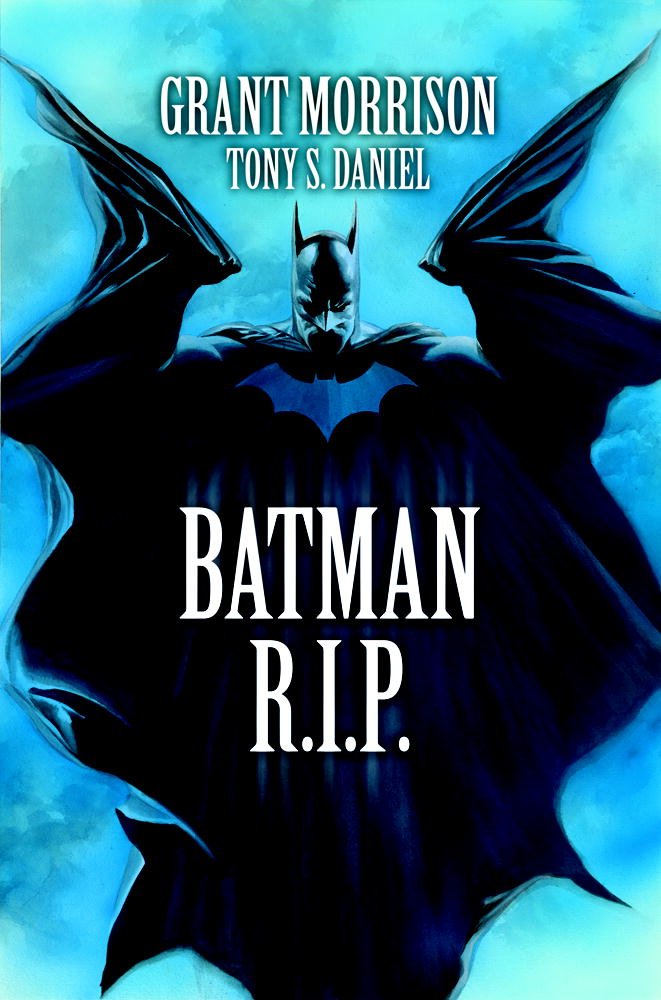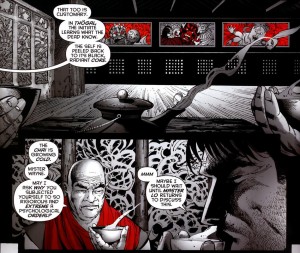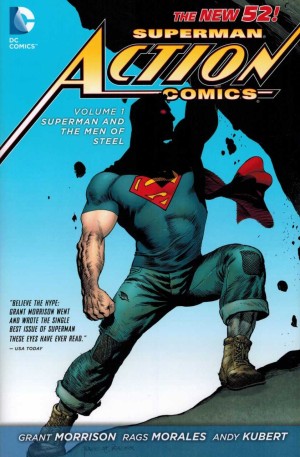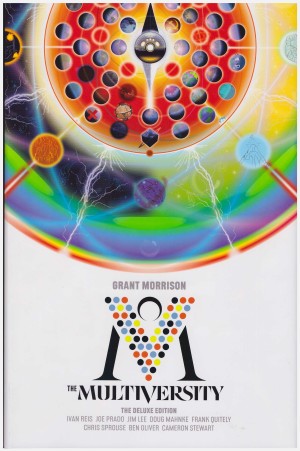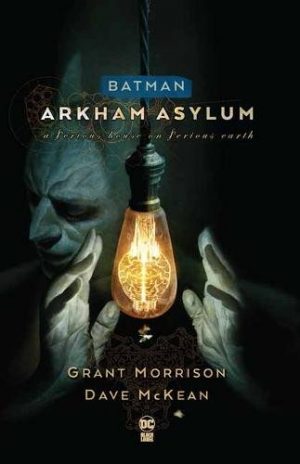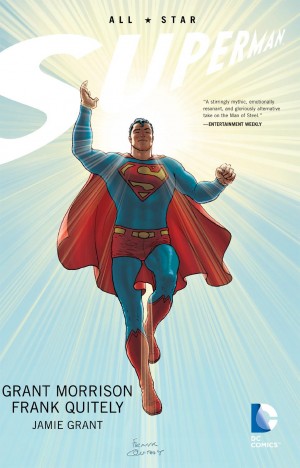Review by Frank Plowright
The book opens with a brief dank and effective sequence in which the Joker informs Batman that very bad people have decided to hurt him. R.I.P. is drawn by Tony Daniel, who’s taken a different approach from his contributions to The Black Glove. His layouts here are far more imaginative, his art more detailed. He delivers some phenomenal pages, and those just wanting to study the art can look out R.I.P. Unwrapped, an oversize edition presenting the story via Daniel’s pencils before being inked by Sandu Florea.
Both Robin and Alfred have concerns about Batman’s wellbeing as he continues to search for a clues about an elusive secret society named the Black Glove, but Alfred is the more stoical. As the story continues it becomes apparent that the Black Glove’s involvement in Batman’s life extends back further than he imagines.
Grant Morrison’s plotting is dense and what appear to have been throwaway moments in his previous books come home to roost here as Bruce Wayne and Batman are systematically picked apart. The method by which this occurs is controversial. Key to the story is a deliberate period of isolation in the past, the results of which were a breakdown necessary for a mental adjustment to become Batman. This proved a divisive proposition, as did what amounts to a drug induced hallucinogenic trauma in the present day resulting in a form of ur Batman. If that premise is accepted, this element is well-handled, and isn’t the problem here.
The problem is that the motley collection of third-rate villains Morrison has assembled from 1950s Batman stories never convince as an all-powerful, far-reaching organisation with the resources and influence to overcome Batman. Those used to pre-empting mysteries will probably also figure out a betrayal. Such is the adrenaline thrill of what Morrison offers, though, that neither, is a fatal flaw in the bigger scheme. The concluding chapter switches back between past and present, and surely addresses a further criticism of R.I.P., that the story is difficult to follow. It requires attention to detail, but everything is explained other than matters deliberately left open ended. Can every element of a hallucinogenic experience be explained? No. So, for instance, the participation of Bat-Mite is open to interpretation. Is the overall story poorer for this? Definitively not.
As the title indicates, by the end of the book Batman is dead, but that’s not quite the whole of it, as elements lead into DC universe modifying Final Crisis. A coda nicely titled ‘What the Butler Saw’, runs through Batman’s career from the perspective of Alfred Pennysworth, as attempts are made to manipulate Batman’s memories. This section will be difficult to follow for those not well versed in Batman history, and the compressed narrative adds to the problem. Those who are familiar will find Alfred’s perspective on familiar events illuminating, and Lee Garbett’s illustration emotive.
